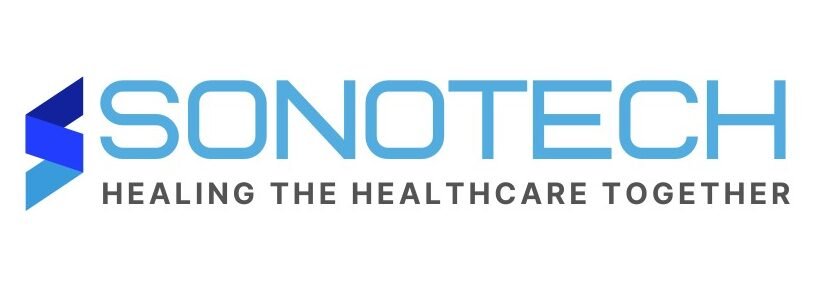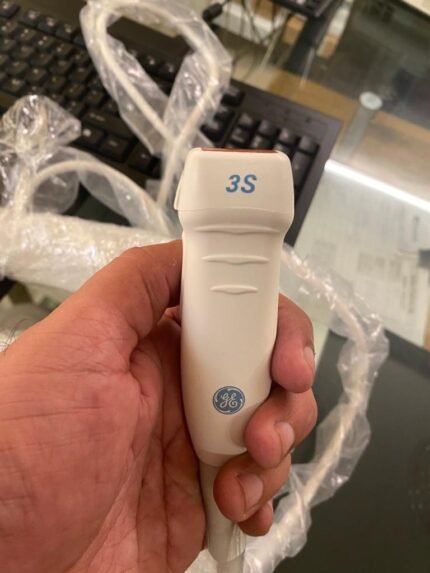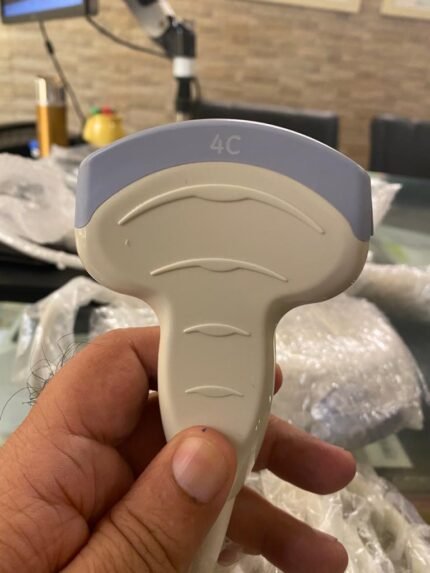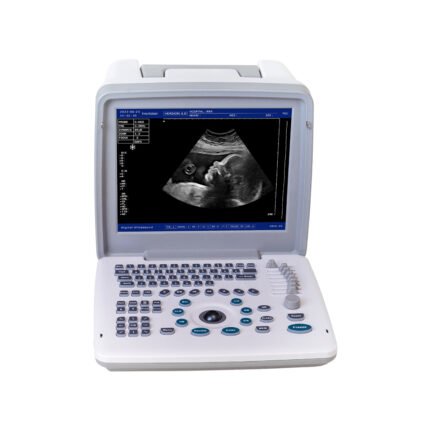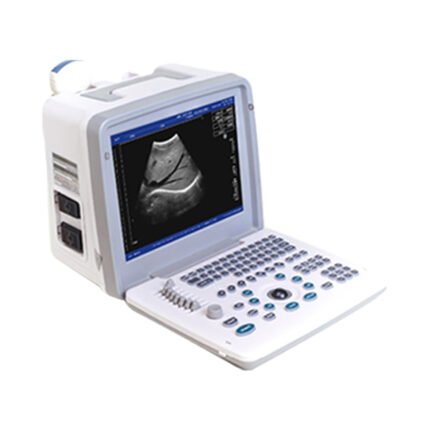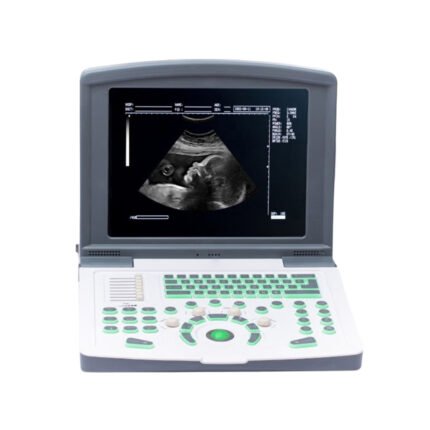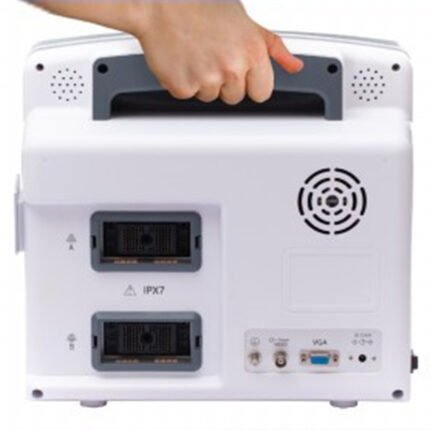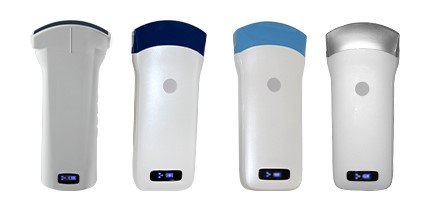USB and WiFi Ultrasound: The Best Sellers in Medical Imaging
The field of medical imaging technology has advanced greatly in recent years because to the introduction of new and more sophisticated imaging technologies. Today, ultrasound is among the most popular diagnostic imaging procedures. Ultrasound is used in a wide variety of medical fields, from obstetrics and gynecology to cardiology and radiology. Ultrasound machines used to be bulky, heavy, and expensive, but technological advancements have made them more manageable in size and cost. The most often used types of portable ultrasound equipment are USB ultrasound devices and WiFi ultrasound devices.Ultrasound scanners that plug into a USB port
USB ultrasound devices are among the most popular types of portable ultrasound machines. The USB connection is how these gadgets connect to a computer or tablet. After the ultrasound equipment generates an image, it is shown on a computer or tablet screen. One of the most appealing features of USB ultrasonic devices is their portability. Because of their light weight and mobility, they may be used anywhere from a hospital or clinic to an outdoor setting. Another perk is the affordable price of USB ultrasound machines. Since they cost a fraction of what standard ultrasound machines do, they are an excellent option for hospitals and clinics on a tight budget. Ultrasound equipment that connect through USB are similarly easy to use. They are designed to be user-friendly even for medical professionals who may not have much experience with ultrasonography. This is because the vast majority of USB ultrasound devices run on intuitive programs.Mobile ultrasound scanners
WiFi-enabled portable ultrasound machines are another common type. Like their moniker suggests, these gadgets link up with a computer or tablet via wireless fidelity (WiFi). After the ultrasound equipment generates an image, it is shown on a computer or tablet screen. The ability of WiFi ultrasound devices to connect wirelessly to a computer or tablet without the need for wires or cables is a major benefit. Therefore, they are quite convenient to use, especially in high-pressure medical settings. WiFi ultrasound equipment also has the added bonus of portability. They are compatible with a broad variety of electronic devices. WiFi ultrasound equipment is also very easy to use. They are designed to be user-friendly even for medical professionals who may not have much experience with ultrasonography. Most WiFi ultrasound machines have user-friendly, straightforward interfaces.To what end do you recommend WiFi and USB Ultrasound Equipment?
Ultrasound equipment that can connect to networks through USB and WiFi offers several benefits to medical practitioners. The benefits of such gadgets include, among others:- Ultrasound machines with USB and WiFi are versatile and easy to use because of their portability and minimal weight.
- USB and WiFi ultrasound devices are a terrific option for medical professionals on a budget because they are far more affordable than traditional ultrasound machines.
- USB and WiFi ultrasound devices are designed to be easy to use, even for medical practitioners with little to no experkience with ultrasound technology.
- USB and WiFi ultrasound equipment is flexible in that it may be used with a variety of devices.
Conclusion
In conclusion, the USB and WiFi types of portable ultrasound machines are currently some of the most popular ones available. Numerous benefits, such as portability, affordability, ease of use, and flexibility, are offered to healthcare professionals by these devices. Whether you’re a doctor looking to upgrade your ultrasound machine or a patient looking for a more convenient and affordable way to get ultrasound scans, USB and WiFi ultrasound devices are worth considering.Lab equipment
Do you require high-quality laboratory machinery? Stop looking! Our online store has a wide selection of lab equipment to meet your needs. Our top-selling lab equipment is used by scientists, researchers, and professionals all around the world. We have all of the essential laboratory equipment and materials, as well as more advanced analysis tools.Let’s take a closer look at some of our most popular laboratory equipment:
High-quality magnification may be provided by our microscopes for a wide range of sample types. Choose from a wide range of options, from traditional compound microscopes to state-of-the-art digital microscopes. Our microscopes are well-suited for use in hospitals, universities, and other scientific institutions. When it comes to separating samples based on densities, our centrifuges are indispensable. Whether you’re processing blood, urine, or something else, our centrifuges will help you get the cleanest possible results. Our centrifuges are available in a variety of sizes and capacities to meet your specific needs. Our incubators provide a controlled setting for the propagation of cells, tissues, and cultures. Whether you’re cultivating bacteria, yeast, or another species, you can rely on the precise environmental conditions provided by our incubators. Our incubators come in a variety of sizes and shapes to handle a wide variety of sample types. We may be confident in the precision of our sample measurements because of our high-quality balances. Analytical balances and top-loading balances are only two of the many options available to us. Our balances are very accurate and reliable, making them perfect for usage in the scientific and industrial sectors. Our spectrophotometers are crucial for determining the qualities of a material by measuring the amount of light emitted or absorbed. Whether you’re analyzing DNA, RNA, or another chemical, our spectrophotometers will provide you with reliable results. Multiple spectrophotometer configurations are available to meet your specific needs. Our autoclaves may be used to sterilise any kind of equipment, media, or samples. No matter what kind of microorganisms you’re studying, our autoclaves will ensure that you obtain reliable findings. Our autoclaves are available in a wide range of configurations to meet your specific needs. Our pH meters are built to provide accurate measurements of the degree of acidity or alkalinity in a given sample. Our pH meters provide reliable results whether testing water, soil, or another substance. Our pH meters are available in a range of configurations to meet your specific needs. Keeping samples at subzero temperatures requires the use of our freezers. Whether you’re working with DNA, RNA, or another type of material, our freezers can help you maintain its quality. Our freezers are available in a variety of sizes and layouts to meet your specific needs. We here at the website understand the importance of high-quality lab equipment to scientific research and development. This is why we stick to selling only high-quality lab equipment made by reputable brands. If you need assistance finding the right lab supplies, our trained staff is here to help. We also give first-rate customer care and support to ensure the optimal performance of your laboratory’s tools. Our best-selling lab equipment will thereby meet the needs of any researcher, scientist, or professional. You can locate the perfect lab equipment for your needs by visiting our website right now. We’re looking forward to working with you.ECG
The electrocardiogram (ECG) has been used for diagnosing cardiac problems for a very long time. A graph generated by a simple, non-invasive test that records the heart’s electrical activity can help doctors make a diagnosis of cardiac problems. In this article, we’ll look at the benefits of ECG and explain why every hospital should have access to it.Accuracy
The electrocardiogram (ECG) is a powerful diagnostic tool that might potentially aid doctors in detecting a wide range of heart problems. It can detect abnormalities in the heart’s electrical activity that a typical physical checkup might miss. This means that doctors can detect heart problems earlier, when treatment is likely to be more successful.Rapid Diagnosis
One of the main advantages of ECG is that it can help in the early detection of heart disorders. This is extremely important since many heart disorders deteriorate and, if left untreated, can have devastating outcomes. Early diagnosis not only improves the patient’s prognosis but also reduces the likelihood of these complications.Non-Invasive
The electrocardiogram (ECG) is a non-invasive test that does not require anesthesia or incisions. This makes it an age-independent, noninvasive method of diagnosis that causes no discomfort to the patient. It’s also a straightforward and quick test that may be performed at any hospital or doctor’s office.Versatility
The electrocardiogram (ECG) is a multipurpose diagnostic tool that may detect arrhythmias, heart attacks, and heart failure. It’s also a handy tool for calculating cardiovascular disease risks and monitoring treatment progress.Cost-Effective
The expense of healthcare can be reduced by using diagnostic tools like ECG, which are quite inexpensive. Because it is a non-invasive test performed in a doctor’s office or hospital, there is no need for expensive hospitalization or invasive procedures. In addition, if caught early, several costly surgeries or treatments might be avoided.Patient Education
ECG can also be used to educate people about their cardiovascular conditions. Patients can have a better understanding of their cardiac status thanks to the test’s graph, which depicts the heart’s electrical activity visually. It’s possible that increased adherence to treatment will improve outcomes for patients.Conclusion
An electrocardiogram (ECG) is a vital diagnostic tool that should be available at each medical facility. Medical personnel may establish an early diagnosis of a wide range of heart diseases using this test since it is safe, reliable, and very inexpensive. By catching issues before they worsen, early diagnosis improves health outcomes for patients. It is a versatile diagnostic tool with potential applications in determining cardiovascular disease risk and monitoring treatment efficacy. Patient education is another benefit of ECG, which can improve outcomes by increasing patient compliance. If you’re in search of a trustworthy ECG machine, go no further than our top sellers. Our high-quality medical equipment may be customized to meet the needs of any healthcare facility.Patient Cardiac Monitors
As medical technology advances, there is a greater need for reliable and accurate cardiac monitoring devices for patients. Whether you’re a doctor, nurse, or family member, monitoring the heart’s electrical activity is an essential part of providing care. Patients’ hearts may be monitored remotely, even in their own homes, thanks to the widespread availability of wireless and portable patient cardiac monitors. The following are examples of popular heart monitors now on the market: Philips Healthcare’s IntelliVue X3 The Philips IntelliVue X3 is a portable, compact, and user-friendly cardiac monitor that records vital signs including blood pressure, electrocardiogram (ECG), and pulse-oximetry (SpO2) in real time. Its many features, such as the ability to personalize the interface and create alarms, make it ideal for use in acute care settings such as ERs, ICUs, and similar facilities. The device’s intuitive layout and wireless connectivity make patient information available from anywhere. GE Healthcare’s unified CARESCAPE The GE Healthcare CARESCAPE One is a versatile and user-friendly patient cardiac monitor designed for use in healthcare settings such as hospitals, clinics, and nursing homes. This little device measures temperature, SpO2, NIBP, and ECG, among other parameters. Easy data transmission and remote monitoring are made possible by its touch-screen interface and built-in wireless networking functions. Welch Allyn Connex Spot Monitor The Welch Allyn Connex Spot Monitor is an easy-to-use, lightweight device for taking vitals including heart rate, blood pressure, and temperature on the go. It has a touch screen that makes it easy to manage, and it can connect to a wireless network for hassle-free file sharing and remote monitoring. The gadget is most useful in outpatient settings like clinics and urgent care centers. Masimo Rad, Age 97 The Masimo Rad-97 incorporates Masimo’s state-of-the-art noninvasive monitoring technologies, such as Masimo acoustic respiration rate (RRa) monitoring and Masimo SET pulse oximetry, to provide cutting-edge cardiac monitoring for patients. The device also monitors temperature, pulse rate, and oxygen saturation levels in the blood in real time. Its wireless connectivity characteristics allow for easy data transfer and remote monitoring, making it useful in a wide range of clinical situations. The Mindray BeneHeart R12 is a state-of-the-art cardiac monitoring system designed for use in hospitals, clinics, and emergency rooms. It has advanced arrhythmia detection and analysis capabilities in addition to continuous monitoring of ECG, SpO2, NIBP, and temperature. The intuitive touch screen and clean design make it easy to operate, and the inclusion of wireless networking allows for streamlined data transfer and remote monitoring. In conclusion, cardiac monitors play a crucial role in the healthcare system by providing doctors and other caregivers with the data they need to make educated decisions about their patients’ treatment. Whether you’re looking for a lightweight unit for at-home monitoring or a robust clinical system, the market is stocked with options. These days, the most trusted and widely used cardiac monitors for patients include the state-of-the-art Philips IntelliVue X3, GE Healthcare CARESCAPE One, Welch Allyn Connex Spot Monitor, Masimo Rad-97, and Mindray BeneHeart R12.Fetal monitors
Fetal monitors are an essential tool in obstetrics for checking on the well-being of the baby during the pregnancy and labor. The cardiotocography (CTG) monitor is widely used in hospitals and clinics as a fetal monitoring instrument. The benefits of CTG fetal monitors and recommendations for the best models on the market will be discussed here.What is fetal CTG monitoring?
CTG fetal monitoring is a non-invasive technique for measuring uterine contractions and fetal heart rate. A tocodynamometer, which measures the force of contractions on the abdomen, is used to keep track of the fetus’s heart rate during labor. Baby’s heart rate data, including any fluctuations that may have happened during labor, is graphed.What makes fetal CTG monitoring so important?
In order to ensure the baby’s health and safety during birth, CTG fetal monitoring is used by obstetricians and midwives. Changes in fetal heart rate may indicate fetal pain or oxygen depletion. With the help of the CTG monitor, doctors can immediately diagnose and treat any issues, protecting the health of the expecting woman and her child.Widely used CTG fetal monitors
Edan F3 Fetal Monitor
The Edan F3 fetal monitor is widely recommended by doctors thanks to its high-tech capabilities and intuitive layout. The high-resolution color screen makes it simple to observe and interpret fetal heart rate and uterine contractions. The data may be printed directly from the screen using a thermal printer for use in further analysis by medical professionals.
Huntleigh’s Sonicaid FM800 CTG Embryo Monitor
The Huntleigh Sonicaid FM800 CTG fetal monitor is an additional high-quality choice for doctors. The monitor’s large color display makes monitoring the fetal heart rate and uterine contractions easy. The fetal heart rate may also be audibly monitored without the need for headphones thanks to the monitor’s built-in speakers. The monitor has many alarms that sound when certain conditions are met, such as when the fetal heart rate or uterine contractions change.
GE Corometrics 170 Series Fetal Monitor
The fetal monitor from the GE Corometrics 170 Series is the best option for medical professionals due to its reliability and precision. The monitor features an easy-to-read, large display and many alarms that can be activated in response to changes in the mother’s vital signs or the developing fetus’s heart rate. The monitor has a thermal printer, so doctors may print off the data for further review.
Last but not least, continuous fetal monitoring with a CTG provides obstetricians and midwives with invaluable data on the health and well-being of the baby during the labor process. Fetal monitors like the Edan F3, Huntleigh Sonic aid FM800, and GE Corometrics 170 Series all have state-of-the-art features and solid track records, making them viable options for healthcare professionals. Whether you’re a healthcare provider wanting to improve your fetal monitoring equipment or a new parent interested in learning more about the technology used during childbirth, a CTG fetal monitor is an investment in the safety and welfare of mother and baby.
